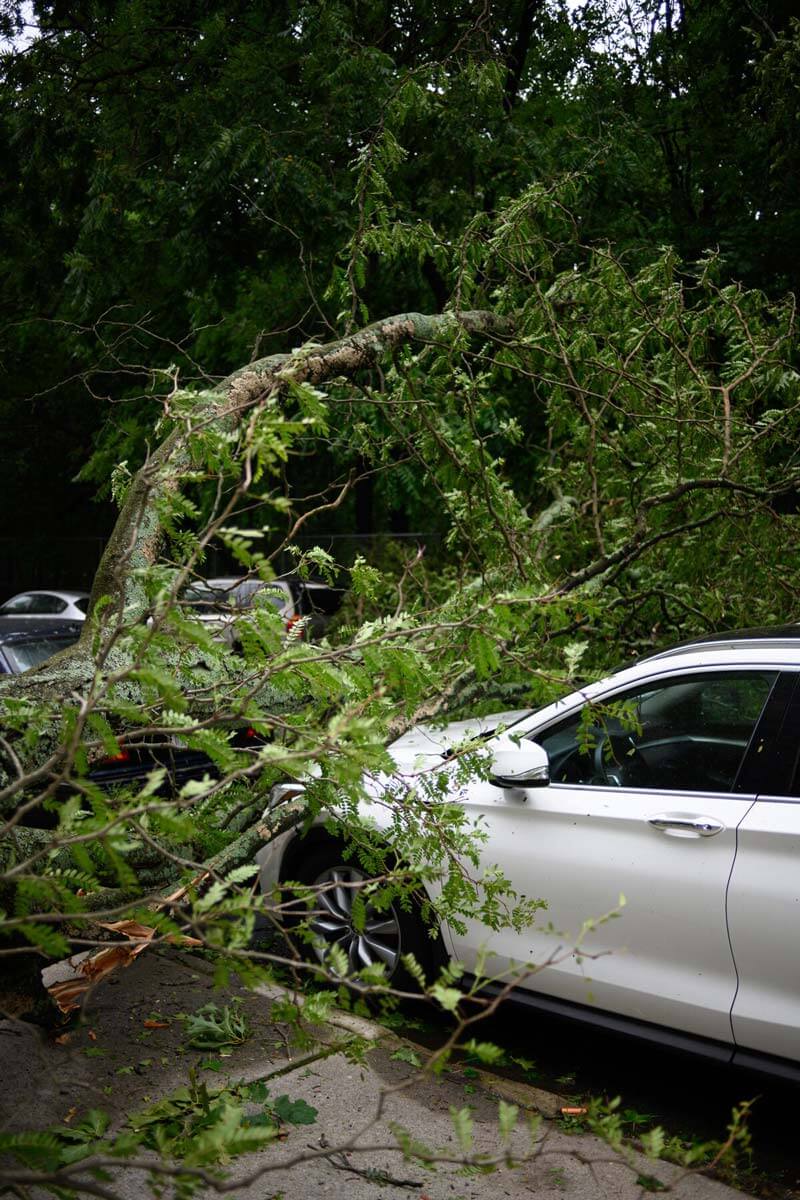David Pogue, in his book How to Prepare for Climate Change, cites a study by Utah sociology professor Sarah Grineski, who interviewed Houston, Texas residents in 2012 about their level of general hurricane preparedness and then interviewed them again after Hurricane Harvey hit in 2017. Not only did she find that homeowners who had prepared for hurricanes experienced less property damage and financial hardship, but she also found that they had significantly fewer physical health symptoms, fewer post-traumatic stress symptoms, and experienced fewer adverse events, such as being separated from pets or going without food and water.
Although the official Atlantic hurricane season is June 1 through November 30, the most active time for hurricanes and tropical storms in Massachusetts is late August through September, so now is a good time to prepare.
The Saffir-Simpson Hurricane Wind Scale
Hurricanes have a 1 to 5 rating or “category” based on their maximum sustained winds. The higher the category, the greater the hurricane’s potential for property damage.
A category 1 hurricane, for instance, will have maximum sustained winds of 74–95 mph, which will produce some damage to roofs, shingles, vinyl siding, and gutters on homes and may cause large branches of trees to snap and shallowly rooted trees to topple, leading to power outages that could last for days.
In contrast, a category 5 hurricane has sustained winds of 157 mph or greater and will cause catastrophic damage, including total roof failure and wall collapse, power outages that will last for weeks or months, and large areas that are uninhabitable for weeks or months.
Tropical Storm and Hurricane Watches and Warnings
The National Weather Service issues tropical storm and hurricane watches and warnings to alert the public of potential hazardous conditions. A Tropical Storm Watch means tropical storm conditions are possible within the next 48 hours, while a Tropical Storm Warning indicates sustained winds of 39–73 mph associated with a tropical storm are expected to affect a specified area within 24 hours.
A Hurricane Watch means hurricane conditions are possible within the next 48 hours, while a Hurricane Warning indicates sustained winds of 74 mph or greater, associated with a hurricane, are expected to affect a specified area within 24 hours.
What to Do to Prepare for a Tropical Storm or Hurricane
- Listen to a National Oceanic and Atmospheric Administration (NOAA) Weather Radio or to a local news station for the latest information.
- Review your family’s emergency plan.
- If you live or work in a flood zone or an area that is prone to flooding, be ready to evacuate and find out where your nearest designated storm shelter is located, and what COVID protocols are in place.
- If you are not in an area prone to flooding and are planning on riding out the storm at home, gather adequate supplies in case you lose power and water for several days and you are unable to leave.
- Prepare for power outages by charging cell phones and electronics and setting your refrigerator and freezer to their coldest settings. If you use electricity to get well water, fill your bathtub with water to use for flushing toilets.
- Keep your car’s gas tank full. Pumps at gas stations may not work during a power outage.
- Secure or bring in outdoor objects (patio furniture, children’s toys, trash cans, etc.) that could be swept away or damaged during strong winds or flooding.
- Clear clogged rain gutters to allow water to flow away from your home.
- Go tapeless! Taping windows wastes preparation time, does not stop windows from breaking in a hurricane, and does not make cleanup easier. In fact, taping windows may create larger shards of glass that can cause serious injuries.
- Turn off propane tanks if you are not using them.
- Prepare for flooding by elevating items in your basement, checking your sump pump, unplugging sensitive electronic equipment, clearing nearby catch basins, and parking vehicles in areas not prone to flooding.
- If instructed, turn off your gas and electricity at the main switch or valve.
- If you receive medical treatment or home health care services, work with your medical provider to determine how to maintain care and service if you are unable to leave your home or have to evacuate during.
- Assemble an emergency kit for your family and pets. Visit Mass.gov for general and COVID-related tips.
- Follow instructions from public safety officials.
- Ensure your smoke and carbon monoxide detectors are working and have fresh batteries.
- If you have life-support devices or other medical equipment or supplies which depend on electricity, notify your utility and work with your medical provider to prepare for power outages.
- Make a record of your personal property by taking photos or videos of your belongings. Store these records in a safe place.
Preparing in advance can help you, your family, and your pets safely weather storms. We will cover what to do during and after storms in the July 23, 2022 issue of The Good Life.
-Sourced from Mass.gov and nhc.noaa.gov






